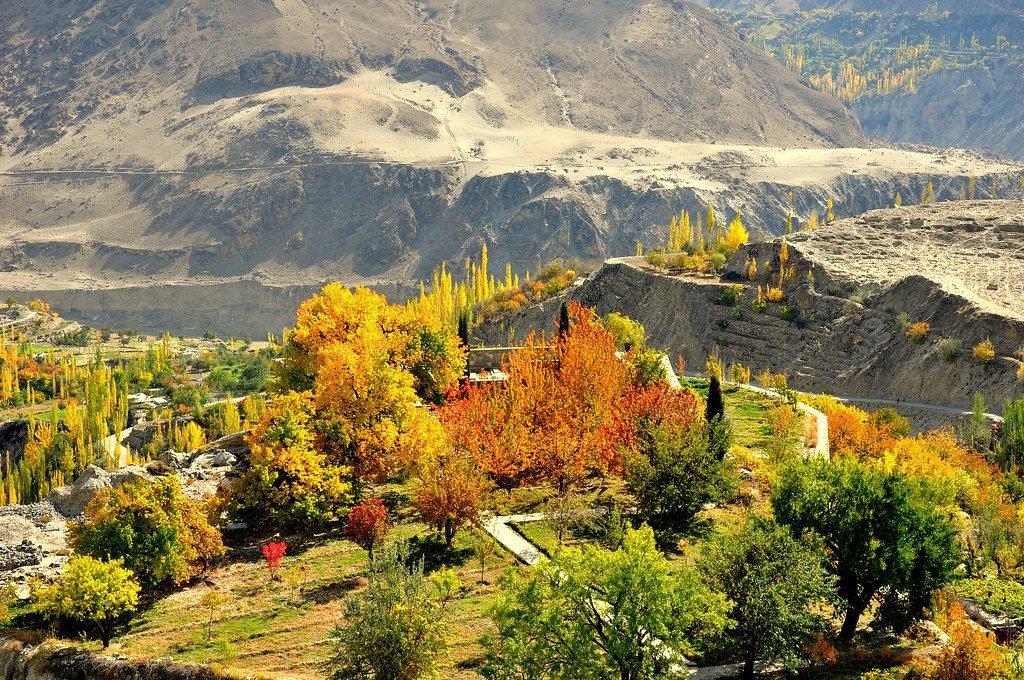Hunza Valley, nestled in the Gilgit-Baltistan region of Pakistan, is not only known for its breathtaking landscapes but also for its rich and vibrant culture. The valley’s culture is a unique blend of ancient traditions, warm hospitality, and a deep connection to nature. This guide delves into the cultural fabric of Hunza Valley, exploring its traditions, festivals, lifestyle, and more.
The People of Hunza Valley
The people of Hunza Valley, known as Hunzakuts, are renowned for their hospitality, longevity, and strong community bonds. Here’s what makes them unique:
1. Longevity: Hunza kuts are often associated with long, healthy lives, attributed to their diet and lifestyle.
2. Hospitality: Visitors are welcomed with open arms and treated with great respect.
3. Community Oriented: Strong community ties and mutual support are central to their way of life.
Traditional Festivals and Celebrations
Hunza Valley is home to several vibrant festivals that reflect its rich cultural heritage:
1. Navroz (New Year)
Highlights: Celebrated on March 21st, marking the arrival of spring.
Activities: Traditional music, dance, and feasts.
2. Ginani Festival
Highlights: Celebrates the harvest season.
Activities: Folk dances, traditional songs, and communal meals.
3. Shandur Polo Festival
Highlights: Held at the world’s highest polo ground.
Activities: Polo matches, traditional music, and cultural displays.
4. Babush Festival
Highlights: Celebrates the apricot harvest.
Activities: Apricot Based dishes, traditional dances, and music.
Traditional Music and Dance
Music and dance are integral parts of Hunza Valley’s cultural identity:
1. Traditional Music
Instruments: Dadang (drum), Surnai (flute), and Ghatak (string instrument).
Genres: Folk songs that narrate stories of love, bravery, and nature.
2. Traditional Dance
Styles: Sword dances, harvest dances, and celebratory dances.
Occasions: Performed during festivals, weddings, and community gatherings.
Traditional Clothing
The traditional clothing of Hunza Valley reflects its cultural heritage and practical needs:
1. Men’s Clothing
Shalwar Kameez: Loose Fitting trousers and a long shirt.
Woolen Cap: Known as a “Pakol,” worn for warmth.
2. Women’s Clothing
Dress: Colorful, embroidered dresses with intricate designs.
Headscarf: Often adorned with traditional patterns.
Architecture and Heritage Sites
Hunza Valley’s architecture is a testament to its rich history and cultural heritage:
1. Baltit Fort
Highlights: A historic fort with stunning architecture and panoramic views.
Cultural Significance: Reflects the region’s historical and cultural evolution.
2. Altit Fort
Highlights: One of the oldest forts in the region.
Cultural Significance: Showcases traditional building techniques and design.
3. Ganesh Village
Highlights: Known for its ancient rock carvings and petroglyphs.
Cultural Significance: Offers insights into the region’s ancient history.
Language and Literature
The language and literature of Hunza Valley are integral to its cultural identity:
1. Language
Burushaski: The primary language spoken by the Hunzakuts.
Wakhi and Shina: Also spoken by smaller communities.
2. Literature
Oral Traditions: Folktales, poetry, and songs passed down through generations.
Written Works: Increasing efforts to document and preserve the region’s literary heritage.
Traditional Crafts and Art
Hunza Valley is known for its traditional crafts and art forms:
1. Embroidery
Highlights: Intricate designs on clothing and household items.
Cultural Significance: Reflects the region’s artistic heritage.
2. Wood Carving
Highlights: Detailed carvings on furniture and architectural elements.
Cultural Significance: Showcases the skill and creativity of local artisans.
3. Pottery
Highlights: Functional and decorative pottery items.
Cultural Significance: Preserves traditional crafting techniques.
Tips for Experiencing Hunza Valley Culture
Here are some tips to fully immerse yourself in the culture of Hunza Valley:
1. Participate in Festivals: Join local celebrations to experience the vibrant culture firsthand.
2. Visit Heritage Sites: Explore forts and ancient villages to learn about the region’s history.
3. Engage with Locals: Interact with the friendly Hunzakuts to gain insights into their way of life.
4. Try Traditional Food: Savor local dishes to experience the culinary heritage.
5. Respect Local Customs: Be mindful of cultural norms and traditions.
Frequently Asked Questions (FAQs)
1. What is the main language spoken in Hunza Valley?
The primary language is Burushaski, with Wakhi and Shina also spoken.
2. What are the main festivals in Hunza Valley?
Navroz, Ginani Festival, Shandur Polo Festival, and Babush Festival are the main celebrations.
3. What is traditional Hunza Valley clothing like?
Men wear Shalwar Kameez and woolen caps, while women wear colorful, embroidered dresses and headscarves.
4. What are the main cultural heritage sites in Hunza Valley?
Baltit Fort, Altit Fort, and Ganesh Village are key heritage sites.
5. What is the significance of music and dance in Hunza Valley culture?
Music and dance are integral to festivals, celebrations, and community gatherings.
6. What traditional crafts are Hunza Valley known for?
Embroidery, wood carving, and pottery are prominent traditional crafts.
7. How can I experience Hunza Valley culture as a visitor?
Participate in festivals, visit heritage sites, engage with locals, and try traditional food.
8. What is the significance of Baltit Fort in Hunza Valley culture?
Baltit Fort reflects the region’s historical and cultural evolution.
9. Are there any traditional Hunza Valley dishes I should try?
Yes, try Chapshuro, Hunza bread, Harissa, and apricot soup.
10. What is the best time to visit Hunza Valley to experience its culture?
Spring and summer are ideal, as many festivals and cultural events take place during these seasons.
Conclusion
Hunza Valley’s culture is a rich tapestry of traditions, festivals, and heritage that offers a unique and immersive experience for visitors. From vibrant festivals and traditional music to historic forts and warm hospitality, the cultural fabric of Hunza Valley is as enchanting as its landscapes. Use this guide to explore and appreciate the cultural richness of this paradise on earth.






